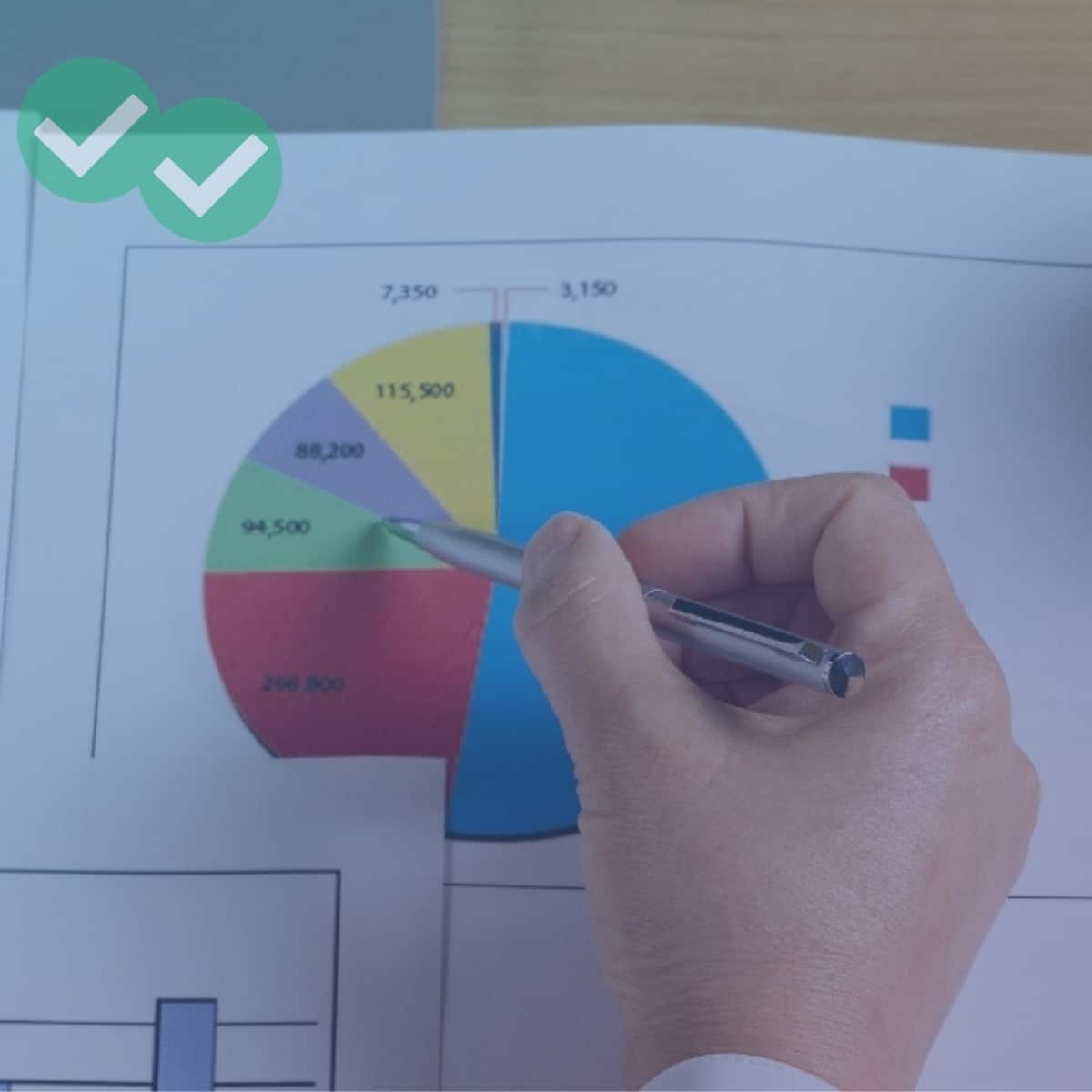When you sit down for the Academic IELTS Writing Task 1 on test day, you’ll see one or two visuals, such as a chart, diagram, or graph. You’ll then write a report to give information based on key features of these visuals. Overall, you have 20 minutes to write 150 words.
The good news? This is a very predictable exercise! In this post, we’ll look at what you need to know about IELTS Academic Writing Task 1 to get a high band score, from tips to sample questions.

(NOTE: This guide is a great supplemental material for any of the Magoosh IELTS study schedules. In fact, we even specifically recommend it as a source of quick reference for our one-week IELTS study plan.)
Table of Contents
IELTS Academic Writing Task 1 Basics
As I mentioned above, IELTS Writing Task 1 on the academic module of the IELTS Writing Test asks you to write about two visuals. The assignment is a lot like monthly report writing that an employee might do to submit to his or her supervisor at work: the boss only wants relevant facts and data based on the latest company numbers. This is also what the test wants!
However, you only have 20 minutes. With that in mind, here is a pacing plan that works for many test-takers. You can make modifications to the amount of time you spend on each step, as needed:
- Reading the prompt, planning the essay: 3 – 5 minutes
- Writing: 10 – 15 minutes
- Editing and proofreading: 3-5 minutes
As you practice, bear in mind that your essay should reflect some fairly detailed information. Make sure you are devoting enough time and attention to the essay prompt and the informational images.
![]()
Scoring Categories
What criteria will you be scored on for the IELTS Academic test? Check it out!
Task Achievement
IELTS defines “Task Achievement” as a measurement of “how appropriately, accurately and relevantly the response fulfills the requirements set out in the task, using the minimum of 150 words” (Source: IELTS, Test format in detail).
Basically, you’re supposed to follow every letter of the directions and the prompt in order to score well in this category. More importantly, it means you should NOT include things that do not belong or are not “appropriate” or “relevant” to IELTS Writing Task 1.
Grammatical Range and Accuracy
According to the official IELTS rubric (PDF), Grammatical Range and Accuracy accounts for a quarter of your score. So what does this mean for you?
First of all, your grammar should be varied. It’s important to mix up different, complex sentences, for example, rather than having them all be simple. Try to avoid using “Be” verbs too often, as well.
Second of all, your grammar should be accurate; avoid grammatical errors. If you have at least a few months left before your test, it’s a great idea to get a solid English grammar workbook to practice polishing your writing skills in this area!
Lexical Resource
You can think of “Lexical Resource” as similar to “Grammatical Range and Accuracy.” Here, IELTS examiners are looking for a wide range of vocabulary—correctly used.
Work on building your vocabulary with resources, like Magoosh’s free IELTS vocabulary flashcards. Again, this will be most useful if you have a significant amount of time before test day. 15-20 words a day is a good goal!
Coherence and Cohesion
This a measurement of your ability to present ideas logically and clearly. In other words, the IELTS exam wants to see that your ideas make sense in the order you present them and that they work together in a logical way.
How can I get a 6.5 (or better) in IELTS Writing Task 1?
For a lot of students, 6.5+ is a great goal for IELTS. So what will boost your band score in the shortest amount of time?
First of all, make sure your paragraph structure is solid. This will help your Coherence and Cohesion score, and may even boost your Task Achievement score, as well!
Next, work on linking words. This will also serve a double purpose: it can boost both your Coherence and Cohesion and your Lexical Resource scores!
Finally, make sure you practice writing model essays to improve your IELTS Writing Task 1 skills. Just copying the template once won’t do much—you’ll need to put those skills to practice over and over again to truly polish them! Here are a few resources to look at for prompts and sample answers.
- Line Graph Band 9 Model Essay
- Bar Chart with Model Answer
- Pie Chart with Model Answer
- Two Graphics with Model Answer
- Map with Model Answer
Then, check out what you need to do to score Band 9 on Writing Task 1 here!
What’s the difference between IELTS Academic Writing Task 1 vs. Task 2?
If you’ve been studying for the IELTS already, you probably know that IELTS Academic Writing Task 1 and Task 2 are quite different. Task 2 is a standard five-paragraph essay in which you present your perspective on an issue.
Task 2 is worth more points than Task 1, and Task 2 requires more time to complete. Therefore, you may be tempted to brush aside IELTS Academic Writing Task 1 as you study, choosing instead to focus much more attention on Task 2. I encourage you to avoid this approach!
However, also putting a lot of effort into preparing for this section can really pay off. IELTS Writing Task 1 can present you with any chart or graph and, with enough preparation under your belt, you can quickly analyze it and write your response without wasting precious minutes.
![]()
Top 5 Tips to Succeed in Writing Task 1
- Start reading right away—you only have 20 minutes!
- Read the summary and titles first.
- Take note of categories / units.
- Decide which information to include in your response quickly.
- Use bullet points to remind yourself of what you want to include.
Bonus Tip: Ask yourself—if you had to give a report at a meeting or in a college class, which information would interest the audience most? Start with this. Try finding an interesting “angle” on the main features of the data (biggest/smallest, more/less, increase/decrease, peak/low point, or trends).
![]()
A Final Word on IELTS Academic Writing Task 1
Now you’re ready to go and practice IELTS Academic Writing Task 1 responses. You should practice regularly, including with full-length practice tests. Make every attempt to create real test conditions when you practice. In other words, find a time when you won’t be interrupted. Limit yourself very strictly to 20 minutes.
Taking IELTS test in General Training and need info about the General Training Writing Task 1? Check out Magoosh’s expert letter writing tips here! (And you can also read a guide to the entire IELTS Writing section!)





